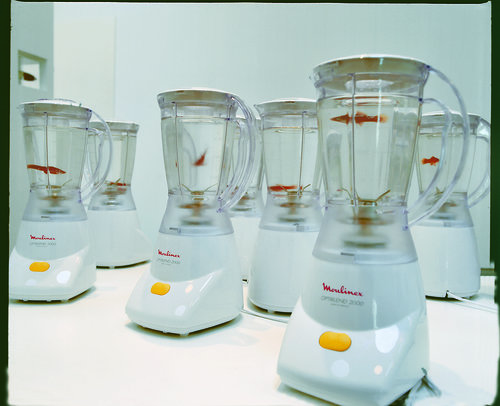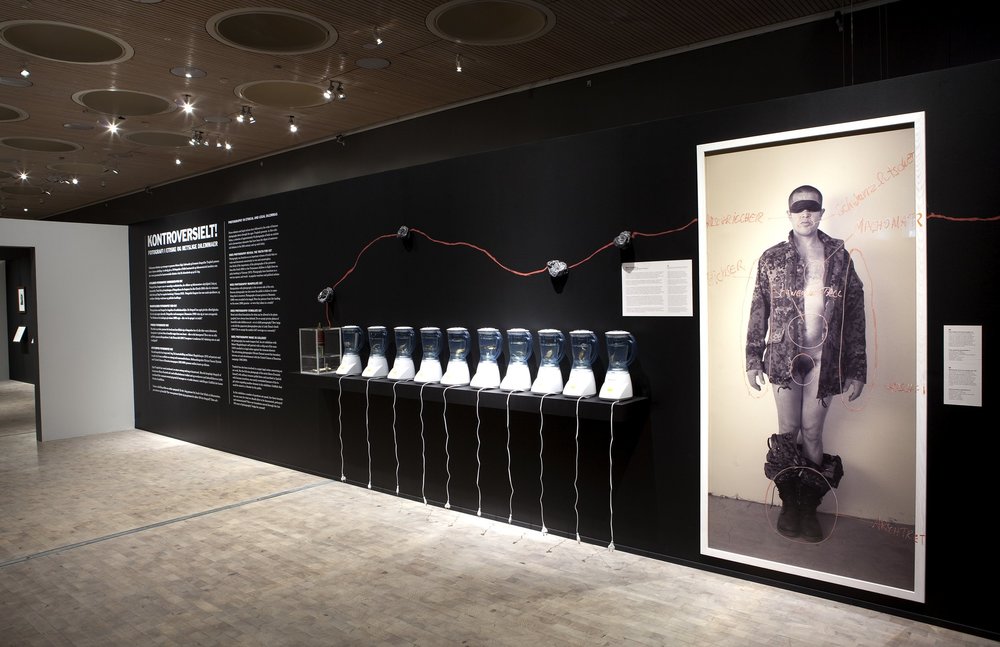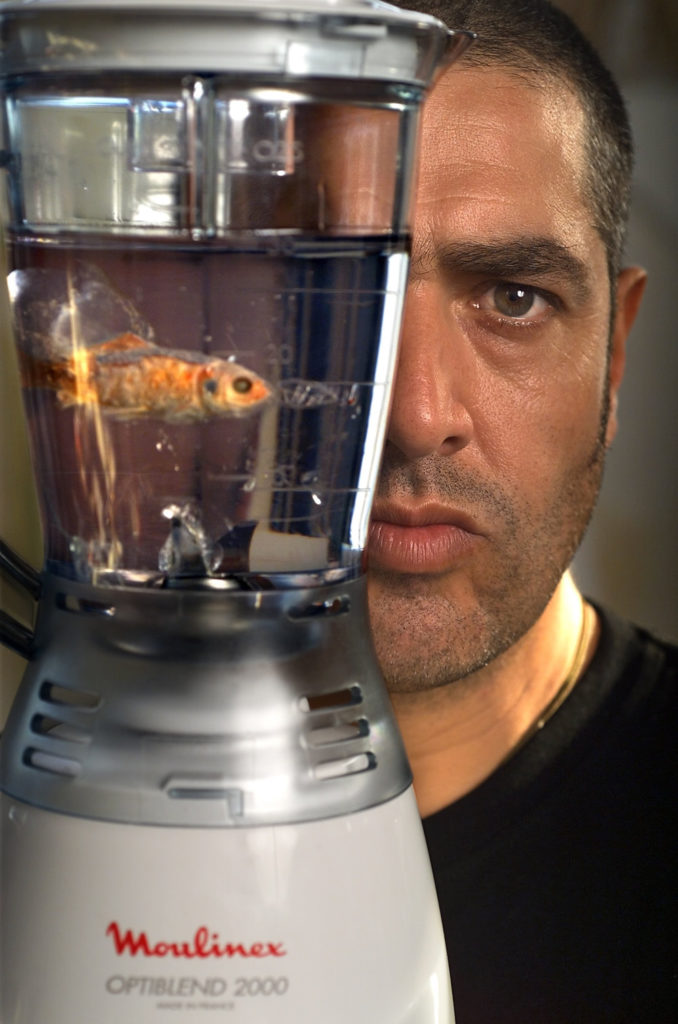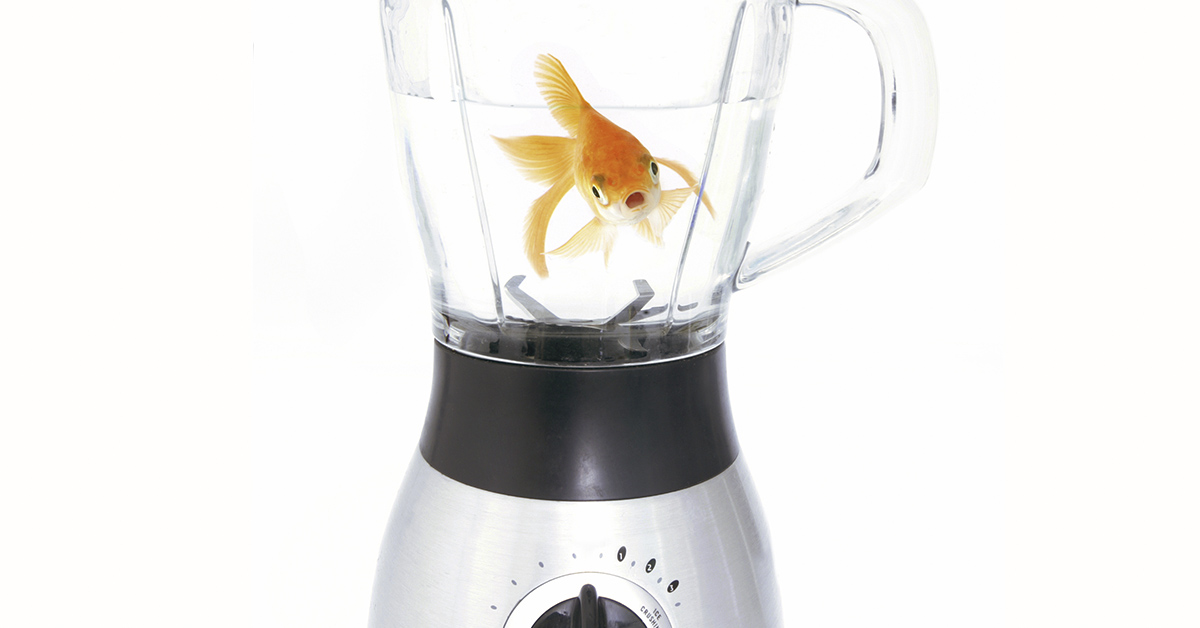An artist put up a disturbing display. It involved a table of goldfish swimming in 10 blenders. The artist invited the viewers to step up and turn on the blenders if they wished. Then, at least one visitor did, instantly killing two goldfish. This display caused a mess of controversy and legal issues but the morality behind the exhibit —called “Helena & El Pescador” — is still debated today.
A Strange Art Display: Goldfish in Blenders
Imagine the scene. There’s an art piece, created by the somewhat infamous Marco Evaristti, featuring ten blenders with a single goldfish inside. Any visitor can step up and turn on the blender, killing the fish, for no reason other than because they can. While most visitors didn’t approach, two goldfish were killed, but it’s unclear if one or two people were responsible for the unnecessary cruelty.

People began to complain and the police came to Peter Meyer, director of the Trapholt Art Museum in Kolding, Denmark. But when he refused to unplug the blenders, he was sued for 2,000 kroner for animal cruelty by the activist group Friends of Animals. Surprisingly, he won that court case. Judge Preben Bagger ruled in his favor because the goldfish were killed “instantly” and “humanely” and were not treated cruelly overall. An expert witness from the blender’s brand, Moulinex, said the fish had died within one second after the visitor turned the blender on. A vet added that the fish must’ve died painlessly.

Meyer’s refusal stood on the grounds of artistic freedom. “It’s a question of principle. An artist has the right to create works which defy our concept of what is right and what is wrong,” he said in court. [1]
However, after the complaints, the blenders were unplugged, leaving the display up without the option to kill the fish. The artist himself, Evaristti, had created the exhibit to challenge the visitors’ sense of morality. In his words, he wanted people to “battle with their conscience” and to “place people before a dilemma: to choose between life and death.” As he surmised, “It was a protest against what is going on in the world, against this cynicism, this brutality that impregnates the world in which we live.”
Marco Evaristti: His Art and His Controversies
Evaristti had become a name in the Danish art scene, but not necessarily a good one. His art has been criticized for being immoral and attention-seeking, as seen with the goldfish in “Helena & El Pascador”. However, the artist disagrees. “What I’m trying to do with these works is to give society a jolt and make it ask questions,” he said in a 2007 interview. “And it can answer those questions, and in that way maybe we can be a little better as human beings.”

In 2004, the artist spray-painted an entire iceberg red in Greenland. He said the work highlighted the fragility of the natural world. Then the iceberg, and his efforts, melted. He was arrested in 2007 for trying to similarly paint the peak of Mont Blanc, declare it an independent state, and declare himself president. “They haven’t given me permission, they say I’m mad,” he said. But he said his aim was to raise awareness for the environment.
In 2008, the artist chose another goldfish-related project. It involved Gene Hathorn, a convict on death row at the time for the murder of his father, stepmother, and stepbrother in 1985. Hathorn had agreed to give his deceased body to Evaristti if his final appeal fails. “My aim is to first deep freeze Gene’s body and then make fish food out of it. Visitors to my exhibition will be able to feed goldfish with it,” said Evaristti. This plan showed his fight against capital punishment. And he saw nothing wrong with his plan since “The real problem is legally killing people.” [2] However, this plan fell through when Hathorn was sentenced to double life imprisonment.
His Most Famous Work: Human Meatballs
But perhaps his most disturbing project came in 2006 when Evaristti made meatballs from his own flesh and served it to 12 people. He got the fat removed via liposuction, added beef, and fried the meatballs in olive oil. His art display showed these meatballs cased in 13 tins along a long table, akin to the last supper. He stated the piece is about unhealthy modern obsession with food and weight loss.
“Firstly, I want to show people that meatballs made with my fat are no more disgusting than the meatballs you buy in the supermarket,” he said. “Secondly, it’s a dialogue with a modern society that lives to eat, rather than eating to live as it should be. You eat, and when you’re fat, you go to a clinic, have an operation, have your fat removed and you start to eat again.” Additionally, about the meatballs themselves, he said they were “even better than my grandmother’s.” [3]
Keep Reading: Science Has A Theory About Those People Who Don’t Return Shopping Carts
Sources
- “Liquidising goldfish ‘not a crime’.” BBC News. May 19, 2003
- “Artist to feed convict to goldfish.” The Guardian. September 2, 2008
- “Meatballs made from human fat, anyone?” Reuters. Gideon Long. May 18, 2007

